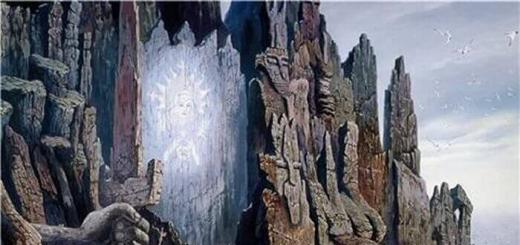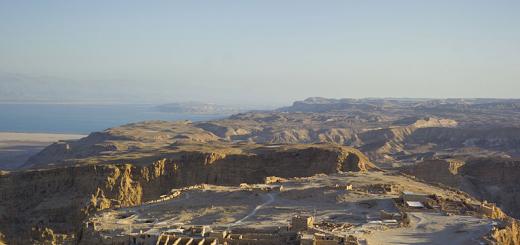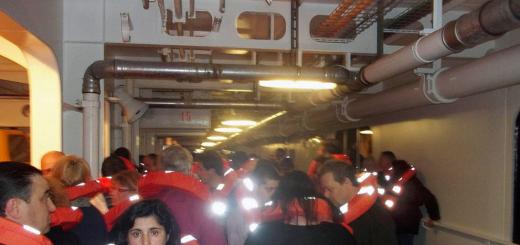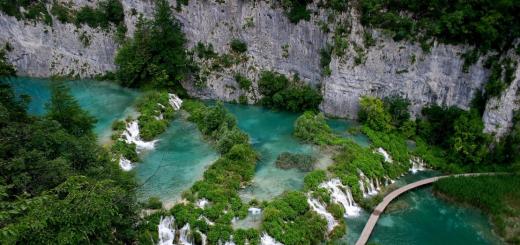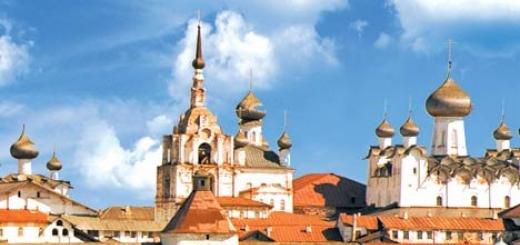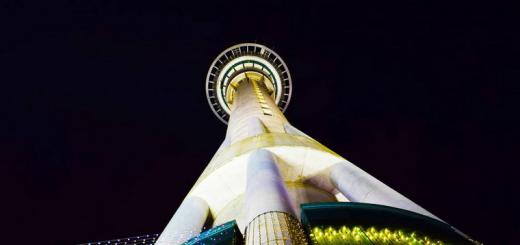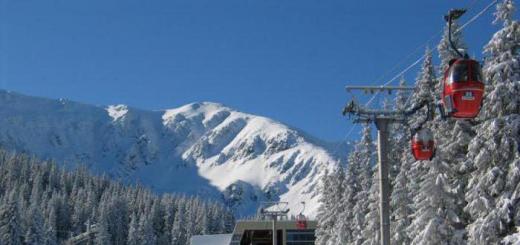D. Trezzini. Summer palace Peter I. 1710-1712
The Summer Palace of Peter I is located at the confluence of the Bolshaya Neva and Fontanka. At the beginning of the 18th century. was surrounded by water on three sides, as it also had a small harbor ("Havana") for small ships from the southern façade. A two-storey brick building with a four-pitched iron roof topped with a copper weather vane in the form of St. George the Victorious, striking a serpent with a spear. At the corners of the roof there are gutters in the form of winged dragons, made of slotted iron. Finishing work, in which A. Schlüter took part (until 1714). G. I. Mattarnovi, I. F. Braunstein and others continued until the mid-1720s.




The entrance is framed by a black marble portal, above which there is a bas-relief depicting Minerva with war spoils. The main decoration of the facades of the palace of Peter I are 28 bas-reliefs, executed in a rare technique of hand-spreading, located in the frames between the windows of the first and second floors. The theme of the images is the glorification of the naval power of Russia. Like any housing that meets the tastes of Peter I, his palace is small: 26.5 x 15.5 m; height of two floors - 8.1 m; height to the ridge of the roof - 13.3 m; the height of the rooms is 3.3 m. The layout of both floors is the same. The first floor was occupied by Peter I himself, the second - by his wife Catherine. The palace was intended only for summer residence (from May to October), therefore it has thin walls and single frames. There are only 14 rooms in the palace, two cooks, two interior corridors. The layout of the rooms is enfilade, and the service premises are connected to the inner corridor.



"August. On the 18th day in St. Petersburg, in the Summer Courtyard of His Majesty, they began to break piles under a stone building "... Travel log 1710
In the interiors of the palace, decorative techniques new for Russia were used - decoration with tiled panels, wooden cladding with elements of the order system, carved panels, monumental and decorative plot and ornamental painting, modeling. Seven rooms of the Summer Palace have been preserved on the ceilings with plafonds with multi-figured compositions performed by G. Gzel and his Russian students in the technique of oil painting, previously almost unknown in Russia.




The green study of the palace is interesting as a rare ensemble of decoration of the ceremonial room that has come down to us, giving an idea of the style of "Peter's Baroque" in the interior: the cabinet is decorated with wood, painted in light green, and picturesque inserts, panels, desudeports. The painting on wood is made in oil using the grisaille technique. It is known that during these years the artists G. Adolsky, O. Kulagin, M. Vorovsky, A. Zakharov, carver I. Petrov worked in the palace. Glazed cabinets for the collection of rarities, which laid the foundation for museum collecting in Russia, are built into the wooden paneling of the wall.
Summer Palace of Peter I in St. Petersburg. Historical building in the style of Petrine Baroque, the former imperial residence, built according to the project of D.A. Trezzini in 1710-1714. Currently, the building is part of the Russian Museum.
The Summer Palace of Peter I is one of the oldest buildings in St. Petersburg, it was built in 1714 and has been preserved in its original form to this day. The two-story palace was intended only for summer residence, therefore it had thin walls and single window frames. The emperor first settled in the unfinished palace already in 1712 and in the summer he lived there for the rest of the years. It was the Summer Palace that gave the name to the Summer Garden.
The facade of the palace is decorated with bas-reliefs from the events of the Northern War by A. Schlüter, where Peter I himself is depicted in the image of Perseus, and the hipped roof is decorated with corner gutters in the form of winged dragons. The roof itself was crowned with a weather vane indicating the direction and strength of the wind. The general view of the Baroque palace is outwardly modest, the building has equal proportions and an abundance of windows on all sides of the building. Interestingly, the building is strictly oriented to the west and east, it was the embodiment of the emperor's idea that Russia is equally focused on both of these sides of the world.
The Summer Palace is rather small - it consists of only 14 rooms (7 on the floor). The inconspicuousness of the external forms was compensated by the richness of the interior decoration. The interiors were painted by Russian artists A. Zakharov, I. Zavarzin and F. Matveev. The most notable decorations inside the palace are an oak panel in the lower vestibule, unique Dutch tiles, fireplaces with stucco bas-reliefs, and picturesque plafonds. The decoration widely used themes of glorification of Russian military glory; many sculptural and artistic elements of the decor are dedicated to this.
The rooms of Peter I were located on the first floor, and the rooms of his wife and children were on the second. The palace also included reception rooms ("assembly rooms"), an office, a throne room, and even a personal solitary confinement for the king. One of the rooms of the palace was occupied by a mechanical turning workshop, where the emperor loved not only to work personally, but also to receive reports from nobles.
In Peter's time, a small harbor was located near the palace - Gavanets, which was later filled up after the flood. She allowed to swim to the entrance to the palace directly on the boat. Also, the water surrounding the palace was used for the sewerage system.
After the death of Peter I, the palace was used for a long time as a summer residence for dignitaries and courtiers, the Supreme Privy Council sat here, but the reigning persons themselves no longer lived in the palace. It is to this that the palace owes its safety - Elizabeth built a new summer residence for herself, and no one began to rebuild the Peter's palace.
In 1925, the palace was taken over by the Russian Museum, and since 1934 it has become a full-fledged museum exhibition dedicated to Peter I.
The Summer Palace of Peter I is included in the Unified State Register of Cultural Heritage Objects (Historical and Cultural Monuments) of Russia.
Tourist notes:
A visit to the Summer Palace of Peter I will be interesting for tourists interested in the architecture of the early 18th century, for everyone who wants to see the expositions located on the territory, and can also become one of the points of the excursion program while exploring the neighboring sights -
Cultural heritage Russian Federation: imperial palaces... Part 1Summer Palace of Peter I
Until 1703, here, near the Neva and Fontanka, was the estate of the Swedish officer Konau. After the founding of St. Petersburg, in 1704, the summer residence of Peter I was located on the site of the estate, which was called the Summer Garden. At the same time, a wooden house was built here for him. This house was built on the very corner, in the place where the Fontanka flows out of the Neva. A small Havana was dug from the Fontanka next to the Summer House of Peter I, thus surrounding it with water on three sides. The water came up to the very porch of the building. 

Cabinet
The Summer Palace of Peter I is the name of the residence of Peter I that has survived to this day in its original form. It is located in the Summer Garden (St. Petersburg). 
On August 18, 1710, the architect Domenico Trezzini began to build a new stone Summer Palace of Peter I on the site of the wooden one. This house was built in the Dutch style, as Peter I loved. It became one of the first stone residential buildings in St. Petersburg, along with the Menshikov Palace, the Golovkin house. The construction of the Summer Palace of Peter I took four years 


Lower cook
The first floor of the Summer Palace housed Peter's chambers, the second - his wife Catherine and children. On the ground floor there was a reception room for the king. Here he accepted written requests and oral complaints. A punishment cell was set up next to the reception room, where Peter personally shoved the guilty ones and then released them himself. From the reception room one could get into a large "assembly" room. 
Writing instrument of Peter I 

Staircase to the chambers of Empress Catherine I. 
Upper cook 

Green Cabinet 


Chinese living room 
Children 

Bedroom of Catherine I 


Throne 


Reception room of Catherine I
Peter I lived in this house only from May to October. Therefore, the palace is called the Summer Palace, it has rather thin walls. There are 14 rooms, two cooks and two corridors. The height of the ceilings is only 3.3 meters. One of Peter's favorite rooms in the Summer Palace was a lathe. The well-known mechanic Andrey Nartov was in charge of her farm. 
Turning 
The first sewage system in St. Petersburg appeared in the Summer Palace. Water was supplied to the house by pumps and went to the Fontanka. The work of the running sewage system was facilitated by the fact that the building was washed on three sides by water, the driving force was the Fontanka current. After the flood of 1777, Havanets was filled up, the sewerage system ceased to function. 

Dining room
In the lobby of the Summer Palace, an attempt was made on the life of Peter I by one of the schismatics. After that, his fellow believers were commanded to wear a rag of red and yellow fabric on their clothes in order to distinguish them from other people. 
Since 1934, a history and everyday life museum has been operating in the Summer Palace. The decoration of the premises was created by artists A. Zakharov, I. Zavarzin, F. Matveev. 
Painting "Summer Palace of Peter I". Series "Views of St. Petersburg". Watercolor and ink on paper. State Hermitage. The artist's gift to Emperor Alexander I (1810) Andrey Efimovich Martynov 
The Summer Palace was built in the Baroque style. It is one of the oldest buildings in the city. The two-story palace is quite modest and consists of only fourteen rooms and two kitchens. 

The facade of the palace is decorated with 29 bas-reliefs, which depict the events of the Northern War in allegorical form. The bas-reliefs were made by the German architect and sculptor Andreas Schlüter. 
Peter moved into the partially finished palace in 1712 and lived there in the summer until his death (1725). It occupied the lower floor, while the premises of the second floor were intended for Catherine. After Peter's death, until the middle of the 19th century, the palace was used as a summer residence for dignitaries and courtiers. 
Navigation devices from the time of Peter I are still in operation
In 1934, a history and household museum was opened in the palace building. 
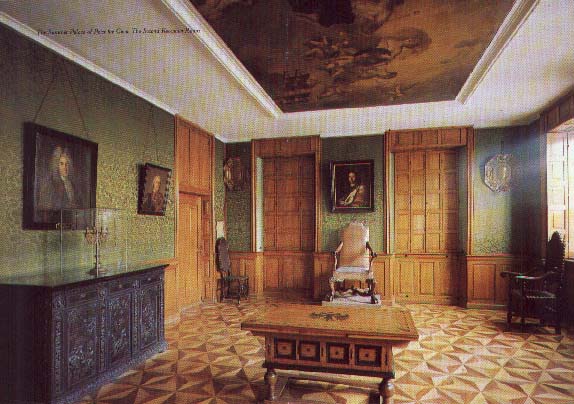
During the Great Patriotic War, the building was damaged: the frames were torn out, plaster fell on the ceilings of the rooms and on the facade, the roof was damaged by shell fragments. The restoration of the palace began in 1946. In 1947 the museum was reopened to the public. In the 1950s-1960s, a full-scale restoration was carried out in order to restore the original appearance of the palace, including replacing the floors, changing the heating system, restoring the molding, drawing of the ceiling lamps, and returning the upholstery of the walls with fabric. 
Currently, the museum is a branch of the Russian Museum.
Address - Summer Garden, 3
Photo - S.N. Qudas
Winter Palace of Peter I
I enter the Palace where silence stands
Light candlelight as at the time
And the spirit of the era of Peter meets me,
And history is a long burden.
Leonid Vstrechny

Unknown Italian (?) Artist, based on a drawing by M.I. Makhaeva. View of the Winter Palace. A fragment of the Winter Palace of Peter I - the personal residence of Emperor Peter I, erected on the embankment of the Neva near the Winter Canal, an architectural and memorial architectural monument of the early 18th century, partially preserved and located in the building of the Hermitage Theater, included in the museum complex of the State Hermitage.
Arcade front door
On the site of the Admiralteisky Island, adjacent to the yard of the ship master Feodosiy Sklyaev, between the current Millionnaya Street and the Neva embankment, in 1712, the Wedding Chambers of Peter I were built, located on the Upper Embankment, which was then located approximately in the middle of the quarter.
However, after 4 years, the Winter courtyard of Peter the Great expanded significantly to the north: piles were broken in the shallow water of the river and a new embankment was built, which still exists today: fathoms, then the mentioned tents of the previous structure remained in the yard "
G. Mattarnovi. Facade project. 1716 g.
Peter I conceived the new Winter House on the newly organized embankment as a personal residence, fully consistent with his lifestyle and tastes. In 1716, the architect Georg Mattarnovi creates a project and starts construction. The royal family remains to live in the old palace - the Wedding Chambers.
Location features
The seemingly random position of the palace among the usual ordinary buildings of philistine houses was actually surprisingly well chosen by Peter I. It is from here that the most impressive panoramas of the Neva in front of the Strelka are revealed today. Vasilievsky Island, gave the banks of the Bolshaya Neva and the space of the Malaya Neva stretching to the sea: "... the palace is located so that you can see most of the city, the fortress, the house of Prince Menshikov, and especially across the branch of the river, the open sea"
- Description of the capital city of St. Petersburg // White nights. L., 1975.S. 213. 
The main facade overlooking the Neva was far from the ceremonial representativeness of the palaces of the St. Petersburg nobles, resembling a solid burgher dwelling. The central risalit with four windows on the first floor is rusticated, and on the second it is decorated with Doric pilasters.
In a triangular pediment, two allegorical figures supported a coat of arms cartouche topped with a crown. The sides of the facade with wide blades between the windows are decorated with panels with garlands. The roof is of the Dutch type (with a fracture), above the risalit - in the form of a tent with a decorative vase. The rooms did not exceed 18 sq. m, and only in the front building overlooking the Neva, the Great Hall had an area of 75 sq. m, and the corner to the Winter Canal is 41 sq. m. Attention is drawn to the L-shaped corridor separating the king's rooms.
The front yard and sleigh of Peter I
Returning in March 1718 after a trip to Europe, Peter I makes adjustments to the design of the new palace, ordering "to make ... eight chambers of the upper dwelling" in "small tents
According to Mattarnovi's sketches, the palace was superbly finished with red marble on the walls of the Great Hall, plaster reliefs, oak doors and window frames. The palace had four oak staircases and floors - "French style with frames." In February 1720, the palace was ready.
The palace complex, isolated from neighboring buildings (including wedding tents), also included a service building with a gallery, a boathouse for storing and repairing the sailing boat of Peter I. .jpg/800px-%D0%97%D0%B8%D0%BC%D0%BD%D0%B8%D0%B9_%D0%B4%D0%B2%D0%BE%D1%80%D0%B5%D1%86_%D0%9F%D0%B5%D1%82%D1%80%D0%B0_I_(2).jpg)
Basement in the central part of the palace
Between the boathouse and the living quarters of the palace there was a Havanese (7.5x16 m) and a tiny (16x19 m) parterre flower garden with a fountain at the intersection of diagonal paths was arranged. The patio was lined with Dutch yellow bricks.
Small tents of the Winter House of Peter I. Architect G. Mattarnovi, 1716
Architect Georg Johann Mattarnovi died suddenly on November 2, 1719, when the palace was in the midst of construction. Whether NF Gerbel or BF Rastrelli were among his successors is not documented.
Garden carriage of Peter I
In the period from 1719 to 1722, the central and eastern parts of the front building of the ceremonial halls overlooking the Neva were being erected. Matarnovi refused to distinguish any intermediate parts connecting the three risalits, and made them extremely small - only three windows. However, visually they seem to be larger due to two more windows, compositionally related to the side ledges. The new extended and generally solemn facade organically includes the western part of the palace, built earlier and already representing one whole. To achieve unity, this western "burgher" facade of the Winter House of Mattarnovi repeats as the eastern projection. 
VIEW OF THE OLD WINTER PALACE, IN WHICH PETER I Died. Engraving by E. Vinogradov from the drawing by M. Makhaev. 1753.
The architect concentrated the entire effect of the royal residence in the center with a repetition of the famous effect of the three-span triumphal arch of the Roman Caesars. Powerful columns of the Corinthian order on high pedestals adjoin paired pilasters and form a baroque, upward-looking portico of four pillars bearing a strongly loosened entablature.
The main plastic element is an attic with a spectacular finish. Tall, complex with numerous protrusions and fades, accentuated by panels, it also bears three lush baroque cartouches on the continuation of the window axes. The central cartouche, decorated with figures and a large crown towering on a pedestal, has the complicated outlines characteristic of German art. On the axes of the columns, on the attic, there are four statues with attributes characteristic of the allegories of Peter's time.
With the construction of the Winter Palace of Peter I, the time of modest tsarist dwellings ends - this palace becomes the most solemn in St. Petersburg. At the same time, with all its divisions, scale, size of windows and height of the cornice, the palace is organically connected with the surrounding buildings along the Neva embankment, which gives reason to talk about laying the foundations of ensemble architecture characteristic of St. Petersburg architecture of the subsequent era.
By the fall of 1723 new part the palace was ready. On November 24, here, in the new Cavalier Hall, a great feast took place, which ended with a wonderful fireworks display on the ice of the Neva. And on December 9, in the Great Palace Hall, in the presence of the entire court and many confidants, the betrothal of the Duke of Holstein to the eldest daughter of Peter I Anna took place. The Great Hall was very large - 17.95 by 11.56 meters, height - 6.69 meters. The walls were completed by a frieze and cornice, which were crowned with a paduga. Five large chandeliers hung from a rectangular panel on the ceiling. It was this hall that became the "Sad" or "Burial Sala" of Peter the Great.
In 1725, Peter I died in this palace.
After the death of the tsar in 1726 - 1727, at the direction of Catherine I, the palace was expanded by Domenico Trezzini towards Bolshaya Nemetskaya Street. Also, a square of service buildings are being built around the perimeter of the site, the Havanets are filled up. Instead of numerous, different-time and diverse buildings located on the site, it was necessary to create a two-story building of considerable length with rhythmically divided modest facades overlooking the canal and Bolshaya Nemetskaya Street, where it was planned to build an arch to enter the large front yard. Everything was done with incredible haste.
Some work continued after the death of Catherine I, interiors were created for Peter II. Last changes external appearance dates back to 1731 in connection with the return of the court to St. Petersburg from Moscow. However, Anna Ioannovna settled in the house of Apraksin, which stood on the same Upper Embankment, but closer to the Admiralty. Subsequently, the Old Winter Palace was used for various needs of the imperial court, and under Elizaveta Petrovna, the Life-Campanian company was placed in it, with the help of which the daughter of Peter I took the royal throne. At the end of the 18th century, the Hermitage Theater was built on this site.
Small tents of the Winter House of Peter
It seemed that Peter's Winter Palace was lost and forever buried under the new theater building by architect Giacomo Quarenghi. The research undertaken by Nicholas I, oddly enough, did not give any results and our ancestors forgot about the palace that once existed for a long time.
The first architectural studies were carried out by the chief architect of the Hermitage, V.P. Lukin, and a researcher in its department, E.M. Bazhenova, in 1976, 1979 and 1981. A series of probes laid in the building of the Hermitage Theater made it possible to reveal the boundaries of the old walls of the Peter's Palace, the so-called "Small Tents". Subsequent disclosures and field studies carried out in 1985-1987 made it possible to carry out a graphic reconstruction and, using extensive documentary material, to determine the stages of construction of the Winter House of Peter I. The group of researchers included architects G.V. Mikhailov, V.K. Galochkin, I. V. Burkovskaya, V. V. Efimov.
Painting by Paul Delaroche "Peter the Great"
Research carried out by the architects showed that during the construction of the Hermitage Theater (1783-1789), Quarenghi preserved separate walls of the basement and first floors of the Peter's palace, as well as whole groups of premises for various purposes. In the space under the stage of the theater, a part of the ceremonial courtyard was discovered, surrounded on both sides by arcades of bypass galleries and a suite of rooms in the Winter Palace.
The plot of land adjacent to the façade was lined with clinker bricks during the reconstruction, as it was under Peter I, and in the higher part of the courtyard - with cobblestones (mid-18th century). On the surface of the walls, which have preserved elements of architectural decor - rustic stones and medallions, under layers of plaster of a later time, particles of paint were found, in accordance with the color of which the walls were painted in our time.
Several rooms on the first floor of Peter I's Small Tents have also survived. In three of them, historical interiors have been recreated, and the decoration of the rooms has been restored according to documents describing the work carried out in them: wall panels made of Dutch tiles, inlaid parquet floors, oak shutters and window frames. In the study of Peter I, a stove and a fireplace have been preserved, the tiled decoration of which has also been restored "in the Dutch manner." The furnishings are made up of items that belonged to Peter the Great and are kept in the Hermitage collection.
In addition, on two floors of the theater along the Winter Canal, twelve living quarters of the "Newly Built Chambers" of Empress Catherine I, created by Domenico Trezzini in 1726-1727, have been preserved. The restored premises of the palace opened in 1992 permanent exhibition... The entrance for visitors is from the Dvortsovaya Embankment (house number 32). Opening hours: Tuesday - Saturday 10.30 - 17.00; Sunday 10.30 - 16.00; day off - Monday. Among the open and restored interiors, the following exhibitions should be noted:
Cabinet
Interior decorate card Baltic Sea and paintings: "View of the New Bridge in Paris" (H. Mommers) and "Portrait of Peter I" (Peter van der Werf). The office of Peter I was made in England according to the Tsar's drawing. On it you can see a telescope, a solar and mechanical clock, an inkwell, a sandbox, as well as an amber box presented to Peter I by the Prussian king Frederick William I.
Dining room
The interior is decorated with a Flemish tapestry and paintings by Dutch artists of the 17th century. On the table is a Chinese porcelain dish, a Dutch crystal goblet with engraving, a refrigerator bucket from Augsburg with a bottle of wine found here during the excavation of the central part of the palace. Between the windows there are hours of English work with a miniature portrait.
Lathe
The main attraction is the copying lathe.
Front yard
Here you can see the carnival sledges and the garden carriage of Peter I - the rarest example of a walking carriage of the early 18th century
Wax persona of Peter I
Under the once existing "Funeral sala", where the funeral service for Peter the Great, the premises of the palace guardhouse (guardhouse) have been preserved, in which it was decided to exhibit the "Wax Person". Peter I died on January 29, 1725 in the "Office" - a study located in the western part of the palace. Immediately after the death of the emperor, KB Rastrelli removed the plaster mask from his face and made casts of his hands and feet. Based on these casts and a mask, in 1725 he created the "Person"
Previous photo Next photo







The Summer Palace of Peter I is considered one of the oldest buildings in St. Petersburg. The house is in a very beautiful place called the Summer Garden. This park was laid out at the beginning of the 18th century, when the construction of the Northern capital was just beginning. Peter I invited eminent architects and gardeners to work on his summer residence. The king dreamed of arranging a Versailles-style garden here. Looking ahead, let's say that he did it and to this day the Summer Garden remains one of the favorite places for tourists and residents of the city.
The Summer Palace of Peter I in St. Petersburg is not distinguished by its splendor. This is a very modest Baroque building, quite unlike the royal mansions.
Peter chose the place for the Summer Palace between the Neva and the Fontanka (in those years - the Nameless Erik), just where the estate of the Swedish major Erich von Konow was located. It was here that a small two-storey stone house was built by the architect Domenico Trezzini. True, initially Peter made the plan of the house on his own, and Trezzini only corrected it. It should be noted that the Summer Palace of Peter the Great is not distinguished by its splendor. This is a very modest Baroque building, quite unlike the royal mansions. The layout of both floors is exactly the same. There are only 14 rooms, 2 cooks and 2 interior corridors. The rooms of the tsar were located on the first floor, on the second - his wife Catherine. The owners used this house only in warm weather - from May to October. That is why the Summer Palace of Peter the Great has thin walls and single frames in the windows. The facade of the palace is decorated with 28 bas-reliefs depicting the events of the Northern War.
On the roof of the Summer Palace of Peter I, there is a copper weather vane in the shape of St. George the Victorious, killing a snake. The weather vane sets in motion the mechanism of the wind device located inside the house. The wind direction and strength were indicated on a special board of the device. This device, unusual for that time, was ordered by Peter I in Dresden from the court mechanic.
Despite the outward simplicity, the Summer Palace of Peter I had everything that was required for the needs of the sovereign. In the waiting room, he read letters, dealt with complaints, and occasionally received visitors. In the neighborhood there was a lathe and a lathe, at which Peter worked, a bedroom, a dressing room, a cookery, a dining room and a large room - an assembly. A punishment cell was provided for the guilty. The interior decoration of the palace in an allegorical form glorified the victory of Russia over the Swedes in the Northern War. On the second floor there were Ekaterina's bedroom, a nursery, a maid of honor and a separate room for dancing.
It is interesting that a sewerage system was installed in the Summer Palace of Peter I - the very first in all of St. Petersburg. The building was washed on three sides by water, which was pumped into the house. The flow of the Fontanka River served as the driving force of the sewerage system.
There is another building next to the palace - the Human chambers. The famous Amber Room, a huge library and numerous collections of various things that Peter collected were located here. For example, the anatomical collection of the Dutch scientist Ruysch was kept in the Human chambers. In fact, a large museum was located in this house: the tsar brought here various curiosities, mechanisms, many compasses, astronomical instruments, stones with inscriptions, household items of different peoples and much, much more.
The Summer Palace performed its main function as a country residence of the tsar until the middle of the 18th century. Then officials began to use it. For some time, the palace even stood abandoned. This is what saved it from restructuring. In 1934, the Museum of History and Art was located here. The building was damaged during the Great Patriotic War... But a large-scale reconstruction in the mid-50s of the 20th century helped to completely restore the palace. Today the Tsar's residence is part of the Russian Museum, anyone can go inside and find out how Peter I lived.
Practical information
Address Summer garden: St. Petersburg, Kutuzov embankment, 2. The nearest metro station is Gostiny Dvor. The entrance to the garden is free, the opening hours are from 10.00 to 20.00. The day off is Tuesday.
Address: Palace Embankment
Working hours: from 10..0 to 18.00
Among the palace buildings of St. Petersburg Peter's era at the beginning of the 18th century, the Summer Palace of Peter the Great occupies worthy place... Its uniqueness lies in the fact that it has come down to our days practically in the state of the original source, such as it was under Peter. And where, if not in this palace, you can touch the time Petra, to his personality, which is expressed in the modesty of everyday life, in household items and in interiors.
The palace has survived unreconstructed due to the fact that after Peter and Catherine the First, no one lived in it. Each new empress, and there were several of them after Peter, built her own individual housing. The premises are especially well preserved in the Summer Palace Green Cabinet, the dining room and the maids of honor. The main exhibits of the museum are the surviving personal belongings of Peter the Great and his wife.
The history of the creation of the palace
I must say that Peter the Great began the development of the insular part of the future Petersburg on the opposite Peter and Paul Fortress the coast from the construction of the fortress-shipyard of the Admiralty and from the creation of a glade road to the Novgorodsky tract (the future Nevsky Prospect). In parallel with these important tasks for the future city, Peter develops the idea of creating a Summer Garden at the junction of the Fontanka and the Neva River, suggesting to create a beautiful garden-park like the famous Versailles.
A rather modest Summer Palace of the Emperor is also being built here. After all, being close to the park being created, it was easier for Peter to control the gardening work, and it was quite practical and comfortable to live in the garden and park zone during the summer period and at the same time be within the city limits.
Built a two-story palace for Peter the Great D. Trezzini... Like all existing structures of that period, the Summer Palace was built in the style Peter's Baroque... The austere appearance of the building makes it immediately clear that the palace was not created for ceremonial receptions, but for the private residence of the imperial couple. The building has clear proportions, many windows and a hipped roof. The basement floor eventually went into the ground, which is why the palace seems to be low.
 Facades of the Summer Palace
Facades of the Summer Palace
The facade of the palace is decorated with allegorical images scenes of the Northern War, which at that time was still ongoing. On its two sides, the palace looks at the Neva and Fontanka, and on the third it was equipped Havanese- an artificial reservoir for small galleys.

This palace was immediately intended for summer residence emperor, so it was not insulated enough. Peter lived here with his wife Catherine since 1712 annually from May to October. The fact that Peter did not build himself a new urban summer residence suggests that he was quite comfortable in this small palace.
The interior of the palace
Due to the purely family residence, there are no ceremonial halls for balls and receptions in the palace, and there are 7 small living quarters on each of the two floors. Peter himself occupied the first floor, his wife's quarters were on the second, warmer floor. In total, the palace had 14 rooms and 2 kitchens (cooks).
 Bedroom of Catherine the First
Bedroom of Catherine the First
Lobby decorated with panels of carved oak, which are dissected by pilasters. Ground floor Peter was equipped with a reception room, a punishment cell for those punished for offenses, a large assembly, Peter's bedroom, a kitchen, a dining room and a dressing room. Here as in Winter Palace Peter the Great has a lathe, on which the emperor liked to work in his free time.
 Summer Palace dining room
Summer Palace dining room
Second floor, assigned to Catherine with the children, was divided into a dressing room, a kitchen, a bedroom, a nursery, a room for maids of honor, a dance hall and a throne room. Of all the rooms, it stands out especially Green Cabinet, decorated with inserts of painting and stucco decorations with gilding.
 Peter the Great's green office
Peter the Great's green office
All rooms of the palace with the restored interior design preserve the atmosphere of family comfort that prevailed in the Summer Palace. Peter himself walked here, his wife, their children were. Here Peter the Great led family conversations, here you could get distracted from the imperial affairs and feel like just the father of a family.
 First floor interior
First floor interior
Some of the palace rooms miraculously survived the interior details from the times of Peter. These include tiles Dutch tiles, which lined the walls of the cooking premises, picturesque plafonds artist G.Gzell, carved panel and a stucco fireplace in the Green Cabinet. In the Office of the first floor there is Peter's personal device, which shows the time of day, the strength of the wind and its direction - the so-called Wind instrument... Interestingly, Peter's Summer Palace was the first city building with a functioning system sewers, which worked under the powerful driving force of the Fontanka.
Peter's Summer Palace is one of the oldest buildings in St. Petersburg and a unique monument of Russian history and culture. It is interesting that already under Alexander the First, Peter's palace was opened for public inspection. And in 1840, a partial restoration and systematization of the existing historical values was carried out.

During the Great Patriotic War, the palace building was badly damaged, especially the roof and window frames. Immediately after the war, the renovation of the palace began, which grew into a large-scale restoration.

Today the Summer Palace is a branch Russian Museum and is open to numerous tourists Northern capital... The museum is open all days except Tuesday, from 10.00 to 18.00.













